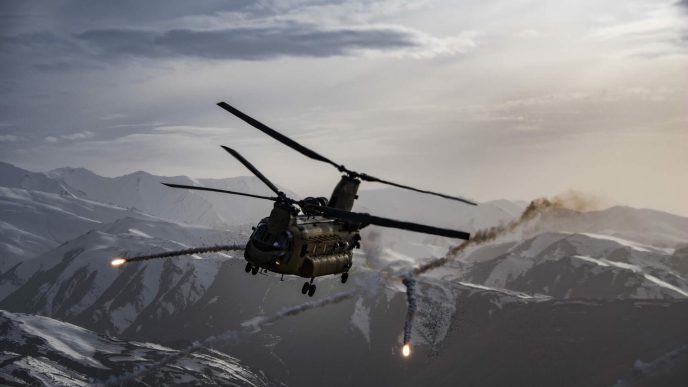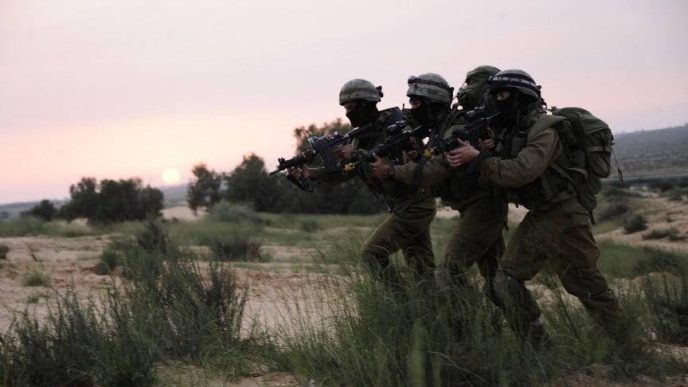The now-famous Abu Kamal raid in 2008 was an assault carried out by CIA tactical operators from the Special Activities Division. On October 26, 2008, the CIA have sent helicopters with CIA paramilitary officers from Special Activities Division and the United States Special Operations Command, Joint Special Operations Command onboard to Syrian territory.
The Syrian regime called the event a “criminal and terrorist” attack on its sovereignty, alleging all of the reported eight fatalities were civilians.
Secret Operation
At that time, an unnamed U.S. military source, however, claimed that the target was a network of foreign fighters who used Syria as a base for safe travel to Iraq. The main goal of the network was to join and support the Iraqi insurgency against the United States-led coalition in Iraq and the official Iraqi government.

Abu Kamal
The now-famous raid took place in Eastern Syria near Abu Kamal, which is near the Iraqi border city of Al-Qa’im. The area was designated by the U.S. intelligence as the main crossing point into Iraq for foreign fighters, money, and equipment in support of the Iraqi insurgency. At some point in time, the Central Intelligence Agency (CIA) confirmed the location of al-Qaeda coordinator Abu Ghadiya and suggested the raid be undertaken. Abu Ghadiya was held responsible for much of the smuggling on that crossing point. According to reports, US President George W. Bush likely approved the mission.

The Mission
Four American Blackhawk helicopters entered Syrian airspace around 16:45 local time on October 26 and deployed roughly two dozen operators, with the main objective to attack a building under construction in the village of As Sukkariyah, just north of Abu Kamal. The two of the four American helicopters landed, allowing 10 US Army Special Forces soldiers to disembark and storm a building under construction. The Syrian government stated that the soldiers killed eight civilians, including a man, his four children, and a married couple.
However, witnesses said they only saw seven bodies and no children. U.S. officials contended that all those killed during the raid were associated with Abu Ghadiya, the operation’s main target. A witness from the nearby village stated that at least two men were seized by the American forces and taken from the scene. An eyewitness told the BBC that two of the dead — the married couple — were “very simple people” who “lived in a tent and were being paid to guard building materials such as cement and timber, 24 hours a day. These people will have had nothing to do with the insurgency in Iraq.”
Syria’s official news agency gave the names of the dead as Dahud Mohammed al-Abdullah, his four sons, and Ahmed Khalifeh Ali Abbas al-Hassan and his wife. The US disputed the Syrians’ statement of civilian casualties, claiming that all of the people killed in the assault were militants responsible for various crimes.
Primary Target: Abu Ghadiya
The target of the raid was said to be a “foreign fighter logistics network”. A U.S. military-related source told CBS News that “the leader of the foreign fighters, an al-Qaeda officer, was the target cross-border raid.” He said the attack was successful but did not say whether or not the al-Qaeda officer was killed. Fox News later reported that Abu Ghadiya, “Al Qaeda’s senior coordinator operating in Syria”, was killed in the attack. The New York Times reported that during the raid the US troops involved killed several armed males who “posed a threat for the soldiers.”
Abu Ghadiya was a relatively unknown militant. He was Sunni Iraqi-born between 1977 and 1979 in Mosul, whose actual name is Badran Turki Hishan al Mazidih. The official U.S. government accuses him of working for Abu Mus’ab al-Zarqawi and later Abu Ayyub Al-Masri, members of Iraqi al-Qaeda. He also was being appointed as the Syrian commander for logistics in 2004.

The US intelligence networks had reportedly known about Abu Ghadiya for “months or years” and had been pressing the Syrian government to hand over, capture, or kill him. According to The New York Times, Abu Ghadiya was either killed near his tent or died after being taken by the American special forces; his body was flown out of Syria. US officials have stated that Abu Ghadiya was killed in the raid along with several other members of his cell.
The Syrian government disputed the claims, stating that these were “lies from the United States” and that the American soldiers had violated international law and Syrian sovereignty.
A few years after, Syria is a war-torn country destroyed by the ancestors of Abu Mus’ab al-Zarqawi, the leader of the al-Qaeda once upon a time supported by Abu Ghadiya, who was allegedly under the protection of Syrian regime.












